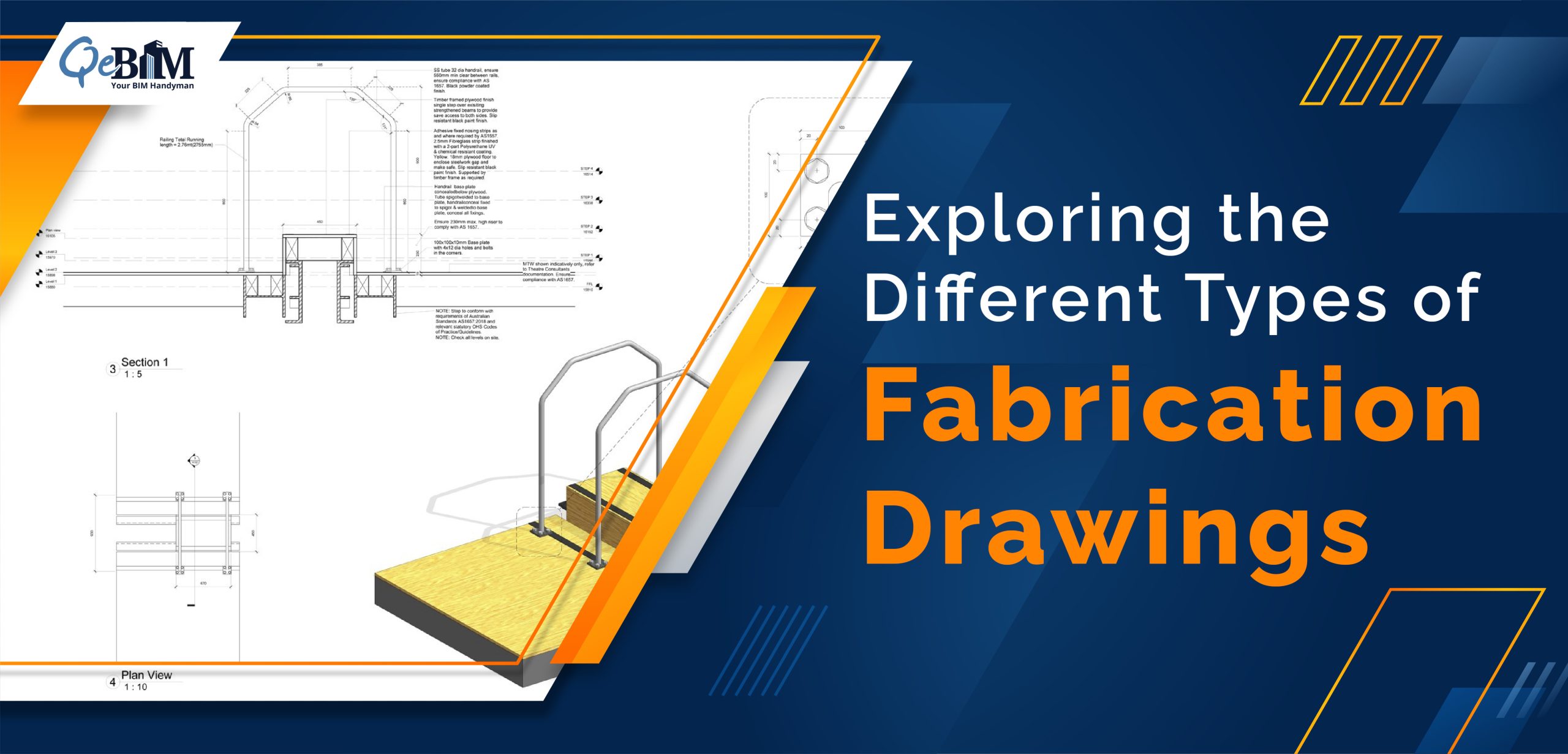Exploring the Different Types of Fabrication Drawing

Introduction
Fabrication drawings play a crucial role in the manufacturing and construction industries, providing detailed visual representations of the components and structures that must be fabricated. These drawings guide fabricators, welders, and technicians, ensuring accurate and precise fabrication processes with every functional information documented. They are created with utmost precision and guarantee that there are no delays or damages during ongoing construction.
In this article, we will delve into the various types of fabrication drawings commonly used in the industry, shedding light on their purpose and essential characteristics.
1) Assembly Drawings:
Assembly drawings provide an overall view of a fabricated structure or a complex assembly. They illustrate how different components fit together, enabling fabricators to understand the relationships and connections between the various parts. Assembly drawings typically include exploded views, which show the individual components separated from the assembly, and a bill of materials (BOM) that lists all the required parts and quantities. Detailed dimensions are also included to ensure proper alignment and fit of the components during fabrication. Assembly drawings are vital in streamlining the fabrication process and ensuring all components are correctly positioned, aligned, and connected.
2) Detail Drawings:
Detail drawings focus on individual components or parts within an assembly. These drawings comprehensively represent a single piece, highlighting all necessary dimensions, tolerances, and surface finishes. Detail drawings are essential for fabricators as they convey crucial information for manufacturing. They include specific measurements, material specifications, and any additional requirements necessary for the accurate production of the component. By providing detailed instructions and specifications, detailed drawings facilitate the fabrication process and help maintain consistency in the manufactured parts.
3) Welding and Metal Fabrication Drawings:
Welding and Metal fabrication drawings are specific to ease out the welding and metal assembling and installation processes. These drawings provide detailed instructions for welders, showcasing weld types, sizes, positions, and required welding symbols. Welding symbols indicate the specific joint configurations and welding techniques to be used. Additionally, the drawings illustrate the sequence of welds and provide critical information about the preparation and finishing of the weld joints, ensuring structural integrity and compliance with industry standards. Welding and fabrication drawings are vital in ensuring the quality and strength of fabricated metal structures.
4) Structural Drawings:
Structural drawings are essential for constructing and fabricating buildings, bridges, and other large-scale structures. They comprehensively overview the entire facility, including dimensions, elevations, sections, and connections. Structural drawings typically include plans, sections, and elevations, giving fabricators and construction professionals a clear understanding of the design intent and how different components and elements fit together. These drawings play a crucial role in the fabrication and construction process by guiding fabricators in accurately placing and aligning various structural elements, ensuring stability and safety.
5) Shop Drawings:
Shop Drawing Services are detailed representations of fabricated components that are produced in a manufacturing workshop or fabrication shop. These drawings provide precise information about the manufacturing process, including dimensions, materials, tolerances, and finishes. Shop drawings act as a vital connection between the original design vision and the actual production process. They are essential for both fabricators and manufacturers, guiding them in producing accurate and consistent components. Shop drawings help ensure the fabricated parts meet the design specifications and enable fabricators to plan and optimize their manufacturing processes efficiently.
6) Piping and Instrumentation Diagrams (P&IDs):
Piping and Instrumentation Diagrams (are specialized industrial drawings used majorly in oil, gas, chemical, and process engineering. P&IDs depict the interconnected piping systems, equipment, and instrumentation required for a specific process. These drawings use symbols, labels, and annotations to represent various components, valves, instruments, and control systems. P&IDs aid in fabricating, installing, and maintaining complex process systems by clearly representing the process flow, equipment arrangement, and control mechanisms. They play a crucial role in guaranteeing the precision and effectiveness of fabricated process systems.
Conclusion:
Fabrication Drawing Services are crucial for ensuring accuracy, precision, and efficiency in the fabrication and construction industries. The different types of fabrication drawings, including assembly, detail, welding, fabrication, structural, shop, and P&IDs, serve specific purposes and provide essential information for fabricators, welders, technicians, and manufacturers. These drawings play a vital role in streamlining fabrication processes, ensuring compliance with industry standards, and ultimately delivering high-quality and reliable products and structures. Professionals in these industries can enhance their communication, collaboration, and overall productivity by understanding the various types of fabrication drawings.